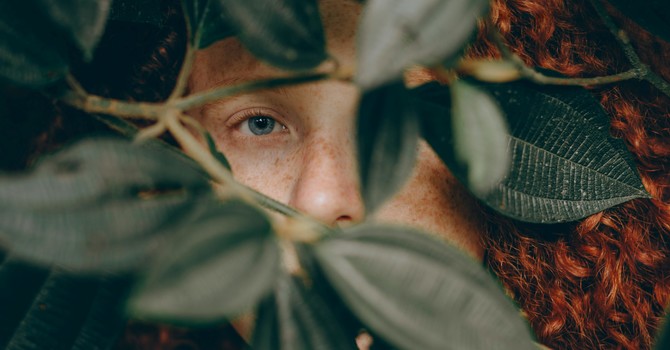
Humans are interpretation machines. We are both like sponges and analytic-super-computers that take information from the world, dissect it, analyze it, and compartmentalize it. Despite what we might think—there are actually 11 different sensory systems in our body (some say as many as 21!). At any moment, there are possibly 1000 different bits of information being registered by our senses. We must make sense of all this information quickly enough to allow us to efficiently navigate through the world. Given we all have this basic superpower, then have you ever wondered how two people can look at the same thing, be in the same place, and at the same time, and have completely different experiences?
In therapy, we often observe about how two people, like two siblings, can grow up in the family, the same surroundings, but their experiences of the same family are completely different. The same happens with couples. They will have completely different reactions to the same basic event.
Turns out, it’s ingrained in us to interpret things differently—which means that no matter how things seem, everyone (at least a little bit) experiences the world differently.
Let’s take an example of a scene at the store—your favourite go-to supermarket.
Our perceptual (interpretation) systems are two-way highways. One side of the highway is called bottom-up processing. We hear the noise, the shuffling of the shoppers. We see the plethora of colourful labels, signs, and marking. We navigate the maze of the aisles somehow finding what we need. We smell the scent of people, floor-cleaner, and sanitizers. We sense the cool breeze of the air conditioning inside the store. Our bodies pick up this basic, sensory data. Two people can be exposed to the same sensory information about the scene.
The opposing lane of the perceptual highway is called top-down processing. Top-down processing is the influence and impact of our prior experiences on our interpretation of what’s happening. One person sees the long aisles of bulk candy containers and remembers the time when they were a kid. They would come to this store and run to the candy aisles to choose what new flavour they will try today. It was a rewarding, satisfying, exciting experience.
And so, this person feels excited now. They might have been 2 years old when this memory happened and they may not remember the memory, but the positive experience is unconsciously triggered when they visit this store.
Well, another person sees the long aisles, the crowds, and remembers a time when they were a kid and they got lost in the aisles and couldn’t find their parents. They ran around, confused by the turns and signs, and the people, and all the noise. It was a scary experience, and they didn’t like it. Today, this person might not enjoy the trip to the supermarket at all.
This is why it’s important to ask questions and check out our assumptions about what we might believe might be universal experiences, but aren't. Amy Herman, an art historian and a curator, teaches the art of perception to medical students, Navy Seals, and FBI detectives. In her talk, Visual Intelligence, she begins the lecture with the following words:
“I ask you that in the next 45 minutes to an hour that we are together to refrain from two words: obviously and clearly. Try to do that for the rest of the day, and even the rest of the week… For the very simple reason that we live and work in a very complex world. Very little is obvious and even less is clear.”
In our previous blog, I mentioned some of the reasons we talk about the past. In our in-take sessions, we begin with the basis that nothing is obvious. So, we ask questions about our clients’ history, family, culture, background, and any past significant events. We do this to get an idea of how prior experience, the top-down processing part of our perceptual systems might be influencing how we interpret the present situation.
What’s more, is that this process builds empathy. We can feel and understand another’s inner world a lot better when we know more about it. What I’ve learned and I’ve witnessed in my practice is paradoxical—in learning about the differences in our experiences (what we fear are obstacles to connection) we often end up feeling more close, more connected to others.



